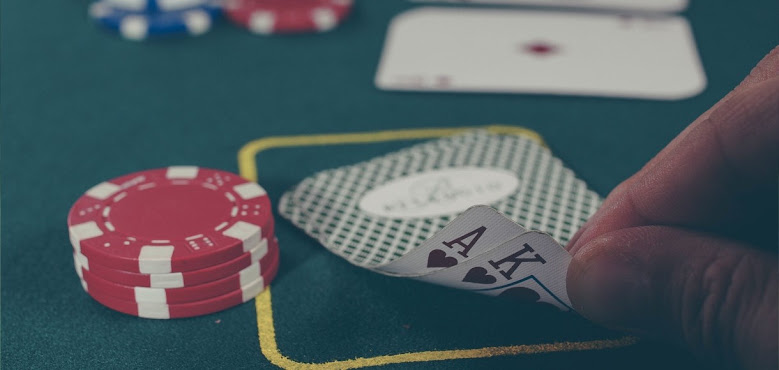Blackjack Rise and Falls
Blackjack's Rise And Fall Shows What Drives Customers Away
It's the game for educated people, mathematicians, and the individuals who like a genuine opportunity to beat the house. For a really long time it was dark, then, at that point, it was famous, and presently it has blurred. Blackjack is verification that not exactly the actual item matters-it's how clients can manage it.
The round of blackjack dates to the center of the eighteenth century. In the same way as other betting interests (poker, for one), it began in France, in spite of the fact that Americans gave the game its current structure. 온라인카지노
Otherwise called 21, the object of the game is straightforward: beat the seller's all out without going more than 21, or busting. The player gets two cards, and the seller gets two, only one of which is noticeable to the table. The player then, at that point, chooses whether to hit (get another card), stand, split (whenever managed two indistinguishable cards, for instance a couple of eights), or twofold down (twofold the bet and get one, and only one, new card). Under conventional standards, a characteristic blackjack (the player draws an ace and a ten-esteem card) pays three to two, meaning a $100 bet returns $150. Any remaining wagers pay even cash; assuming the player busts before the seller, he loses, and on the off chance that the player and vendor tie, it is a push (neither one of the sides wins).
For around 200 years, blackjack was what could be compared to a benchwarmer. Into the 1950s, the most well known gambling club game in Las Vegas was craps, a romping, social game that was seen at its most vivid in Guys and Dolls. At the point when the dice were hot, craps was a party, and when they weren't, everybody experienced together. Blackjack, conversely, is a game that pits every player independently against the seller and frequently one another. An amateur player who goes astray from essential procedure and hits while standing is exhorted may be reprimanded for "taking the seller's ten." Crapping out, conversely, must be accused on the impulsive notion of karma, which, as Sky Masterson knew, isn't generally a woman.
So how did confined, scholarly blackjack shove to the aside muscular, swarm satisfying craps? Math, which may be fearsome when it's on a test yet emphatically agreeable when it can make you cash. In 1956, a group of four of U.S. Armed force mathematicians-who have gone down in the archives of blackjack as the Baldwin bunch distributed an article in the Journal of the American Statistical Association that depicted interestingly a numerically right arrangement of rules for the game. Known as essential procedure, this approach directs to the player how to continue with any hand.
Essential technique, impeccably executed, slice the house edge to right around nothing, which blew some people's minds. Then, at that point, in 1962, UCLA math Ph.D. Ed Thorp distributed Beat the Dealer, a smash hit soft cover that made sense of for the overall population how, by counting cards (monitoring the number of high-esteem cards stayed in play), players could really enjoy a measurable upper hand over the house.
This was the gambling club likeness parting the particle: a magnificent, unusual power released. Shrewd, restrained players could be ensured measurably to beat the club. Blackjack immediately turned into the most well known game in the gambling club, however gambling club administrators' underlying frenzy mellowed to carefulness as they understood that not all players are as savvy of trained as they might want to accept.
Blackjack's prominence from the 1960s onwards is informational: nothing about the actual game changed. There were no new formats, no endeavors to make the game more friendly, no effort to clients. All things considered, restless gambling club chiefs frequently made the game less inviting. But blackjack developed, regardless of the gambling clubs, in light of the fact that the clients had sorted out a way to, at minimum once in a while, win.
For a really long time, blackjack stayed the lord of the tables. The game even had a recovery after 21, a 2008 film in light of the genuine adventures of the MIT counting group, acquainted counting with another age. However, nothing endures always, and on the Las Vegas Strip, at any rate, blackjack has of late assumed a supporting role to baccarat, which is liked by Asian super hot shots. 바카라사이트
However, rivalry from baccarat, gaming machines, and different games isn't the main thing that is harming blackjack. Numerous club supervisors, who have generally been uncomfortable at the game's likely potential gain for players, have shaved off a tad bit of the player's edge to a great extent with an end goal to make the game more beneficial.
The initial step was changing the principles on how the vendor acted when managed a delicate 17 (an expert, which can consider a 11 or one, and a six). Customarily, the seller remained on delicate 17. Altering the standards to command the seller take one more card on delicate 17 added around 0.2 percent to the house edge. It doesn't seem like a lot, yet it adds up, especially in a game whose edge was near nothing. Multi-deck shoes, confining pair-dividing choices, and programmed shufflers were other apparently little changes of the standards in the house's approval that were intended to add to the club's main concern, and in the transient they could have, yet long haul they drove off certain clients. 카지노사이트
%20(2)%20(3).jpg)
.webp)


Comments
Post a Comment